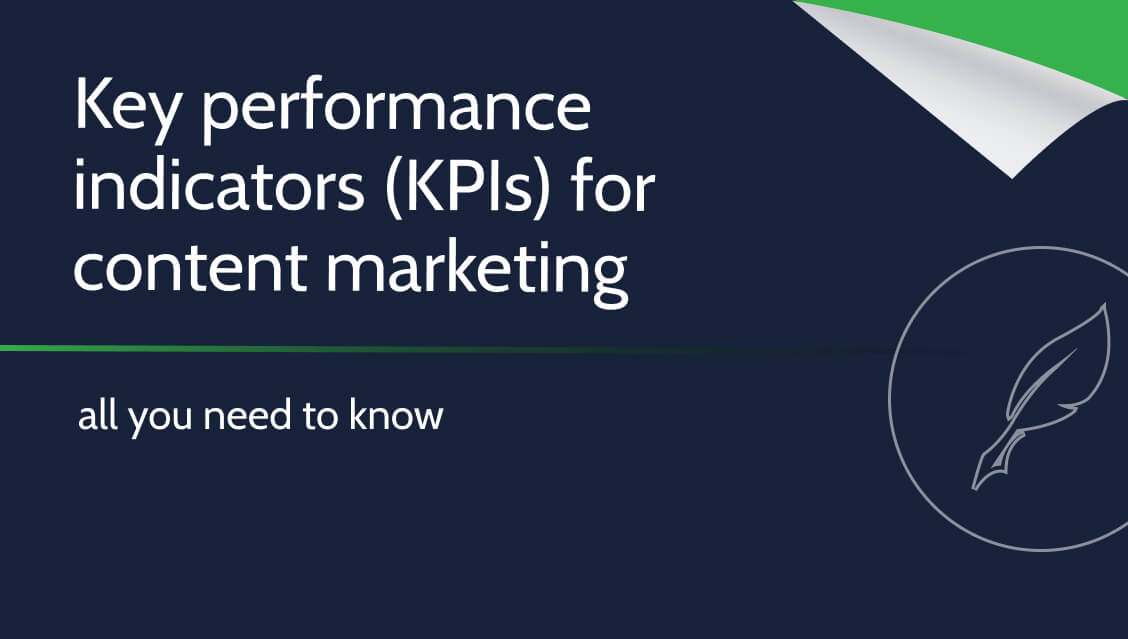Key performance indicators (KPIs) for content marketing

KPIs (an acronym for Key Performance Indicators) are used as measures of the effectiveness and degree of implementation of given goals achieved when taking some action. Of course, the field of content marketing also has them, and we will look at them in the article below.
Why is it worth knowing KPIs?
Content marketing, just like any other type (and basically like any action taken to bring the desired result), must have precisely defined, measurable goals. Without them, it will be difficult to see progress. We have already mentioned this in the text about effectively setting marketing goals.
However, despite a precise vision of the end result and the use of various marketing techniques, we also need indicators whose changes we can track to estimate the effectiveness of the actions taken.
We can illustrate this metaphorically – if our goal is to accelerate the car from 0 to 100 km/h, we have a clear goal, but at the same time a zero-zero goal – let’s assume that after reaching 100 km/h it will be signaled by a diode on the panel, but we lack some a meter that would allow you to track your progress. In this example, the KPIs will be our speedometer, providing information that we are on track (sic) to our goal.
For traditionally understood marketing, KPIs will be the number of product units sold or trends in the number of new customers acquired in a given time period.
Content marketing is governed by slightly different rules. We will look at them in the next paragraph.
KPI determinants for content marketing
Content marketing is a promotional activity aimed at increasing the number of customers.
Content marketing effects, although not immediate, are lasting and relatively stable, generating organic traffic to your website. This is, of course, a highly desirable situation for anyone who wants to expand their reach. So let’s list a few indicators that will help us assess whether we are closer to our desired goal.
Unique Visits ()UV
The so-called unique visits are the basic way to check how many new people you manage to reach over a given period. What does ‘unique’ mean? Unique visit is defined as the number of individual IP addresses within – for example – a month which access your website. Meaning even if someone from one computer accessed our website multiple times, it is still counted as one visit. Thanks to this, website owners are able to know the number of ‘guests’ that visited their sites within a period.
Time spent on the site
Of course, the number of visits alone does not allow us to consider our website as popular. The more time an average user spends on our website, the greater the chance that he or she has found a satisfactory source of information or the product he or she was looking for. What’s more, he may have also started browsing other subpages, which will certainly be facilitated by a well-designed and well-thought-out appearance of the website. This is an extremely desirable situation if we run, for example, an online store. To achieve satisfactory results, it is worth spending time on appropriate architecture, information distribution and internal linking.
Bounce rate
A specific variation of the above is the so-called ‘bounce rate’ – this means visitors who, after entering your website, left it very quickly. You should then consider whether such pages actually provide the information they claim to contain, or whether there are other errors that make users believe they have come to the wrong place.
Another way to combat this factor is to place attention-grabbing elements. However, under no circumstances should we fight this in an ‘offensive’ way, i.e. through pop-ups, intrusive texts calling for action, etc. This is generally always counterproductive.
Page views
This is an obvious indicator of which of your pages are most popular. Therefore, it is worth taking advantage of this and ensuring proper linking, both incoming and outgoing, as a result of which you will also ‘give’ some of these views to less popular sites.
Additionally, it is worth observing the relationship between the previously mentioned UVs and impressions. If a website has a high UV index over many periods of time (e.g. months), it means that people may return to it regularly. You can therefore use this and place the links mentioned above – this will also generate more time spent on the website.
Comments
Another indicator of the popularity of a given website are comments – if a given material is often commented on (and these are comments from real users), it means that the content arouses emotions – this is of course good. The comments section should be as casual as possible, of course respecting all norms of online interaction. Block or delete offensive content, but address and respond to negative opinions promptly.
Summary
- The above list presents the most important, although obviously not the only, determinants of content marketing effectiveness.
- Much depends, among others: on the size of the campaign, available resources or the complexity of the content or website itself.
- However, using the above will certainly give some (and representative) insight into the effectiveness of your content marketing drive.
- Additional methods can be added as the scale of your campaign increases, and the metrics we listed can be a good start.

















Leave a Reply